Ionospheric Corrections for Space Domain Awareness Using HF Line-of-Sight Radar
Highlights
- High frequency radars are a non-traditional class of sensor capable of the surveillance of space. However, the measurements are subject to errors due to ionospheric refraction.
- A method was developed to correct the ionospheric errors from high frequency radar observations of resident space objects using numerical ray tracing through a climatological model ionosphere.
- At solar minimum the method provided a significant improvement in the accuracy of radar range measurements; however, the ionospheric corrections to the measured angle of arrival and radial velocity were small.
- Ionospheric corrections for space domain awareness at high frequency are significant even during the weakest ionospheric conditions, which demonstrates that their application is crucial for accurate orbital determination or subsequent instrument cueing at any stage of the solar cycle.
Abstract
1. Introduction
2. Instrumentation
3. Method
3.1. Measured RSO Position Correction
3.2. Radial Velocity Correction
3.3. Validity of the Phase-Path Correction Method
4. Results
5. Discussion
5.1. Comparison of Ionospheric Corrections at Different Ionospheric Strengths
5.2. TEC Based Methods for Calculating Ionospheric Corrections
6. Conclusions
Author Contributions
Funding
Data Availability Statement
Acknowledgments
Conflicts of Interest
References
- Holzinger, M.J.; Jah, M.K. Challenges and Potential in Space Domain Awareness. J. Guid. Control Dyn. 2018, 41, 15–18. [Google Scholar] [CrossRef]
- Hoots, F.R.; Schumacher, P.W.; Glover, R.A. History of Analytical Orbit Modeling in the U. S. Space Surveillance System. J. Guid. Control Dyn. 2004, 27, 174–185. [Google Scholar] [CrossRef]
- Heading, E.; Nguyen, S.T.; Holdsworth, D.; Reid, I.M. Micro-Doppler Signature Analysis for Space Domain Awareness Using VHF Radar. Remote Sens. 2024, 16, 1354. [Google Scholar] [CrossRef]
- Shepherd, L.C.G.; Command, A.F.S. Space surveillance network. In Proceedings of the Shared Space Situational Awareness Conference, Colorado Springs, CO, USA, 15 September 2006. [Google Scholar]
- Smith, C.H.; Greene, B.; Bold, M.; Drury, R. Development of a new SSA facility at Learmonth Australia. In Proceedings of the 2018 Advanced Maui Optical and Space Surveillance Technologies Conference (AMOS), Maui, HI, USA, 11–14 September 2018. [Google Scholar]
- Holdsworth, D.A.; Spargo, A.J.; Reid, I.M.; Adami, C. Low Earth Orbit Object Observations Using the Buckland Park VHF Radar. Radio Sci. 2020, 55, e2019RS006873. [Google Scholar] [CrossRef]
- LeoLabs Commits to WA for Next Space Radar. 2021. Available online: https://www.wa.gov.au/government/announcements/leolabs-commits-wa-next-space-radar (accessed on 11 August 2025).
- Hall, T.D.; Duff, G.F.; Maciel, L.J. The Space Mission at Kwajalein. Linc. Lab. J. 2012, 19, 48–63. [Google Scholar]
- Hennessy, B.; Tingay, S.; Hancock, P.; Young, R.; Tremblay, S.; Wayth, R.B.; Morgan, J.; McSweeney, S.; Crosse, B.; Johnston-Hollitt, M.; et al. Improved Techniques for the Surveillance of the Near Earth Space Environment with the Murchison Widefield Array. In Proceedings of the 2019 IEEE Radar Conference (RadarConf), Boston, MA, USA, 22–26 April 2019; pp. 1–6. [Google Scholar] [CrossRef]
- Hennessy, B.; Yardley, H.; Debnam, R.; Camilleri, T.A.; Spencer, N.K.; Holdsworth, D.A.; Warne, G.; Cheung, B.; Kharabash, S. Space Surveillance with High-Frequency Radar. Sensors 2025, 25, 2302. [Google Scholar] [CrossRef] [PubMed]
- Frazer, G.J.; Meehan, D.H.; Warne, G.M. Decametric measurements of the ISS using an experimental HF line-of-sight radar. In Proceedings of the 2013 International Conference on Radar, Adelaide, SA, Australia, 9–12 September 2013; pp. 173–178. [Google Scholar] [CrossRef]
- Frazer, G.; Rutten, M.; Cheung, B.; Cervera, M. Orbit Determination using a decametric line- of-sight radar. In Proceedings of the Advanced Maui Optical and Space Surveillance Technologies Conference, Maui, HI, USA, 10–13 September 2013. [Google Scholar]
- Czarnowske, K. Space Domain Awareness Using High Frequency Line of Sight and Ionospheric Correction Methods. Master’s Thesis, Royal Military College of Canada, Kingston, ON, Canada, 2023. [Google Scholar]
- Henault, S.; Czarnowske, K.; Antar, Y.M.M. Multifunction Over-the-Horizon Radar for Space Domain Awareness. In Proceedings of the 2024 18th European Conference on Antennas and Propagation (EuCAP), Glasgow, UK, 17–22 March 2024; pp. 1–5. [Google Scholar] [CrossRef]
- Henault, S.; Czarnowske, K.; Antar, Y.M.M. Space Domain Awareness Using Over-the-Horizon Radar. IEEE Trans. Radar Syst. 2025, 3, 349–359. [Google Scholar] [CrossRef]
- Hennessy, B.; Holdsworth, D.; Yardley, H.; Debnam, R.; Warne, G.; Jessop, M. Effects of Range Doppler-rate Coupling on High Frequency Chirp Radar for Accelerating Targets. In Proceedings of the 2023 IEEE International Radar Conference (RADAR), Sydney, Australia, 6–10 November 2023; pp. 1–6. [Google Scholar] [CrossRef]
- Hennessy, B.; Yardley, H.; Holdsworth, D.A.; Debnam, R.; Jessop, M.; Warne, G. Velocity Ambiguity Resolution using Opposite Chirprates with LFM Radar. In Proceedings of the 2023 IEEE International Radar Conference (RADAR), Sydney, Australia, 6–10 November 2023; pp. 1–6. [Google Scholar] [CrossRef]
- Camilleri, T.; Cervera, M. Ionospheric Corrections for HF Line-of-Sight Satellite Observations at Solar Minimum. In Proceedings of the 2025 URSI Asia-Pacific Radio Science Conference, Sydney, Australia, 17–22 August 2025. [Google Scholar] [CrossRef]
- Holdsworth, D.A.; Spargo, A.J.; Reid, I.M.; Adami, C.L. Space Domain Awareness Observations Using the Buckland Park VHF Radar. Remote Sens. 2024, 16, 1252. [Google Scholar] [CrossRef]
- Hennessy, B.; Rutten, M.; Young, R.; Tingay, S.; Summers, A.; Gustainis, D.; Crosse, B.; Sokolowski, M. Establishing the Capabilities of the Murchison Widefield Array as a Passive Radar for the Surveillance of Space. Remote Sens. 2022, 14, 2571. [Google Scholar] [CrossRef]
- Frazer, G.J.; Williams, C.G.; Yardley, H. Energy-budget analysis of a 2-D high-frequency radar incorporating optimum beamforming. In Proceedings of the 2016 IEEE Radar Conference (RadarConf), Philadelphia, PA, USA, 2–6 May 2016; pp. 1–6. [Google Scholar] [CrossRef]
- Frazer, G.J.; Williams, C.G. Decametric Radar for Missile Defence. In Proceedings of the 2019 IEEE Radar Conference (RadarConf), Boston, MA, USA, 22–26 April 2019; pp. 1–6. [Google Scholar] [CrossRef]
- Guier, W.H.; Weiffenbach, G.C. The Doppler determination of orbits. In Proceedings of the National Aeronautics and Space Administration Conference on Orbit and Space Trajectory Determination, Washington, DC, USA, 12 March 1959; Applied Physics Laboratory, The Johns Hopkins University: Baltimore, MD, USA, 1959; p. 26. [Google Scholar]
- Defence, Academia Demonstrate Space Domain Capabilities. Defence Connect. 2020. Available online: https://www.defenceconnect.com.au/joint-capabilities/7379-defence-academia-demonstrates-space-domain-capabilities (accessed on 13 May 2025).
- Vallado, D.; Crawford, P.; Hujsak, R.; Kelso, T. Revisiting Spacetrack Report #3. In Proceedings of the AIAA/AAS Astrodynamics Specialist Conference and Exhibit, Keystone, CO, USA, 21–24 August 2006. [Google Scholar] [CrossRef]
- Miura, N.Z. Comparison and Design of Simplified General Perturbation Models (SGP4) and Code for NASA Johnson Space Center, Orbital Debris Program Office. Master’s Thesis, California Polytechnic State University, San Luis Obispo, CA, USA, 2009. [Google Scholar]
- Jonker, J.; Cervera, M.; Holdsworth, D.; Neudegg, D.; Harris, T.; MacKinnon, A.; Reid, I. Impact of Ionospheric Doppler Perturbations on Space Domain Awareness Observations. In Proceedings of the 2023 IEEE International Radar Conference (RADAR), Sydney, Australia, 6–10 November 2023; pp. 1–6. [Google Scholar] [CrossRef]
- DeLuca, D.P. SGP4 orbit propagator with GUI; MATLAB Central File Exchange. 2018. Available online: https://au.mathworks.com/matlabcentral/fileexchange/99999-sgp4-gui (accessed on 8 February 2021).
- Vallado, D.; Crawford, P. SGP4 Orbit Determination. In Proceedings of the AIAA/AAS Astrodynamics Specialist Conference and Exhibit, Honolulu, HI, USA, 18–21 August 2008. [Google Scholar] [CrossRef]
- Cervera, M.A.; Harris, T.J. Modeling ionospheric disturbance features in quasi-vertically incident ionograms using 3-D magnetoionic ray tracing and atmospheric gravity waves. J. Geophys. Res. Space Phys. 2014, 119, 431–440. [Google Scholar] [CrossRef]
- Bilitza, D.; Pezzopane, M.; Truhlik, V.; Altadill, D.; Reinisch, B.W.; Pignalberi, A. The International Reference Ionosphere Model: A Review and Description of an Ionospheric Benchmark. Rev. Geophys. 2022, 60, e2022RG000792. [Google Scholar] [CrossRef]
- Davies, K. Ionospheric Radio; IET Electromagnetic Waves Series; Institution of Engineering and Technology: London, UK, 1990. [Google Scholar]
- Bennett, J.A. The calculation of Doppler Shifts due to a changing ionosphere. J. Atmos. Terr. Phys. 1967, 29, 887–891. [Google Scholar] [CrossRef]
- Krystek, M.; Anton, M. A weighted total least-squares algorithm for fitting a straight line. Meas. Sci. Technol. 2007, 18, 3438. [Google Scholar] [CrossRef]
- Herscovici-Schiller, O.; Gachet, F.; Couetdic, J.; Meyer, L.; Reynaud, S. A simple ionospheric correction method for radar-based space surveillance systems, with performance assessment on GRAVES data. Adv. Space Res. 2023, 72, 108–114. [Google Scholar] [CrossRef]
- Hapgood, M. Ionospheric correction of space radar data. Acta Geophys. 2010, 58, 453–467. [Google Scholar] [CrossRef]
- Montenbruck, O.; Gill, E. Ionospheric Correction for GPS Tracking of LEO Satellites. J. Navig. 2002, 55, 293–304. [Google Scholar] [CrossRef]
- Lyu, J.T.; Zhou, C. A Technique for Real-Time Ionospheric Ranging Error Correction Based On Radar Dual-Frequency Detection. Radio Sci. 2017, 52, 1604–1614. [Google Scholar] [CrossRef]

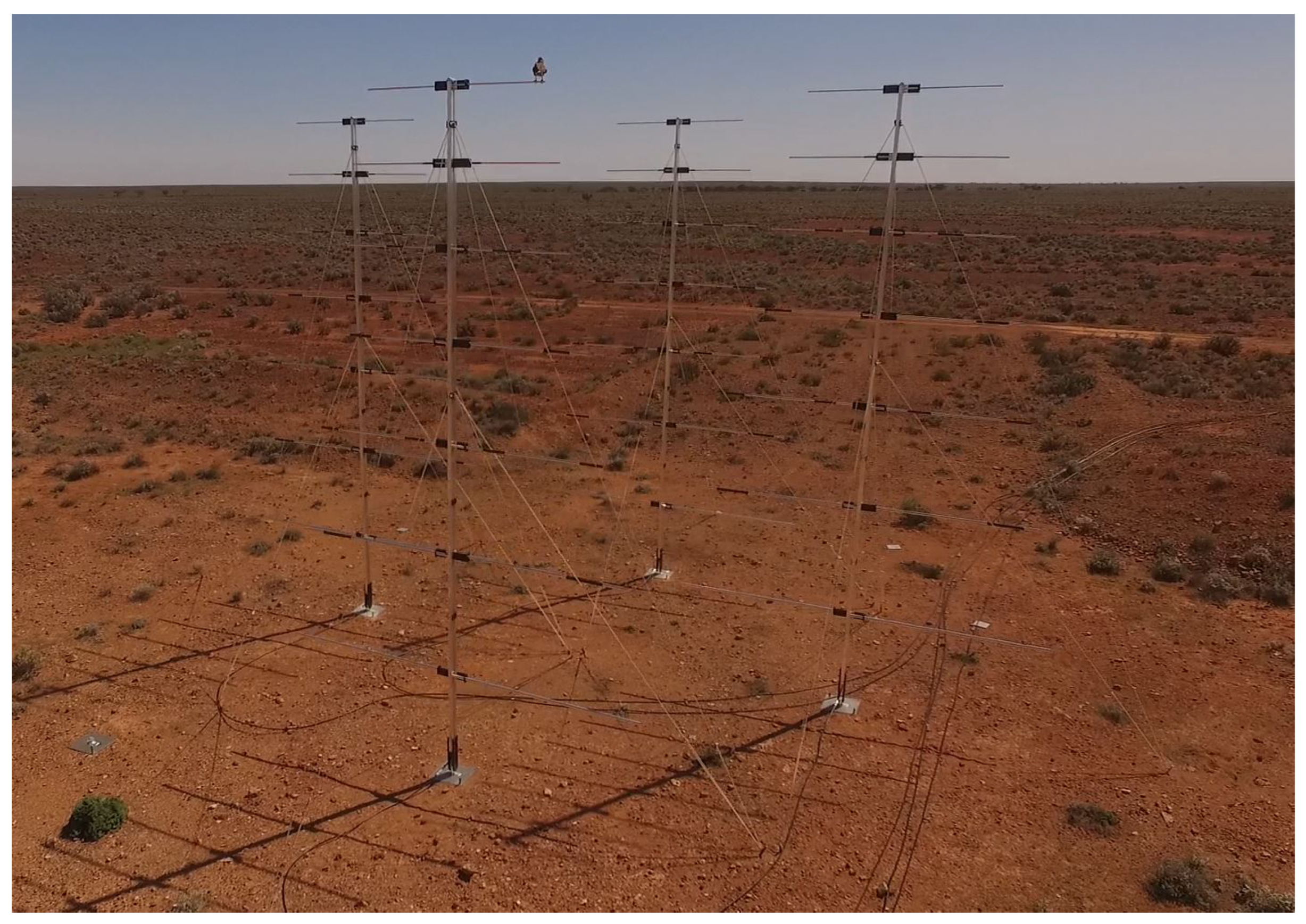
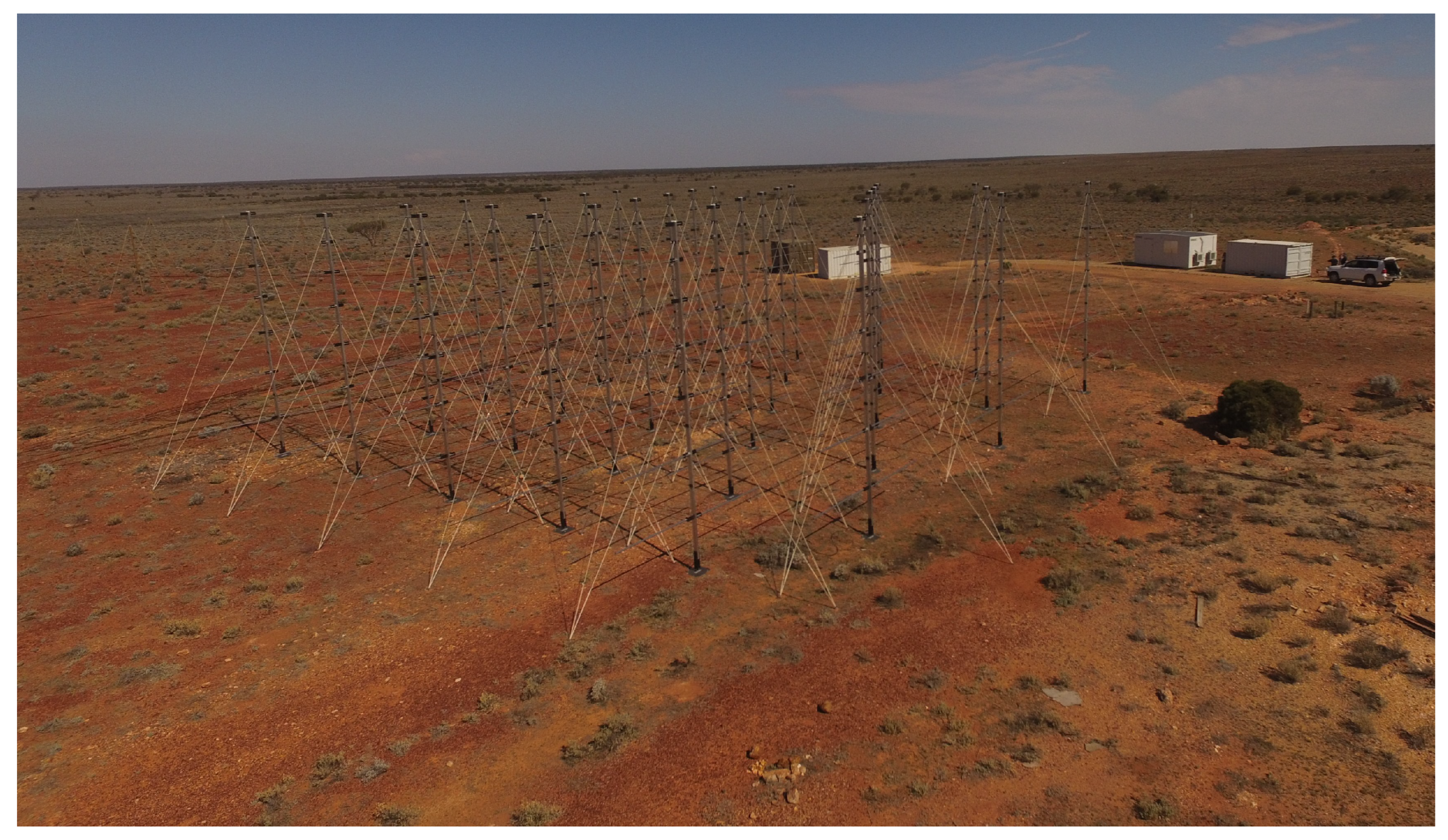




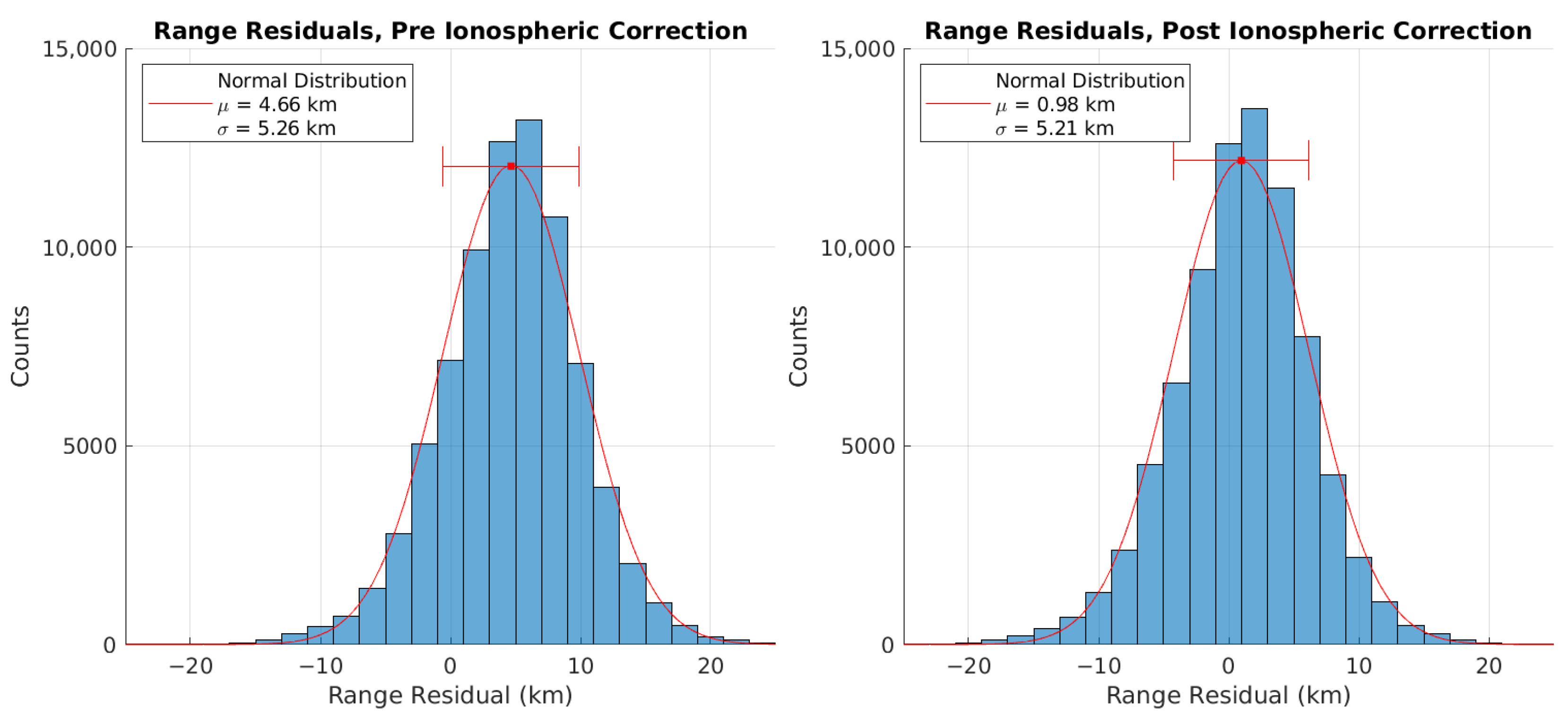
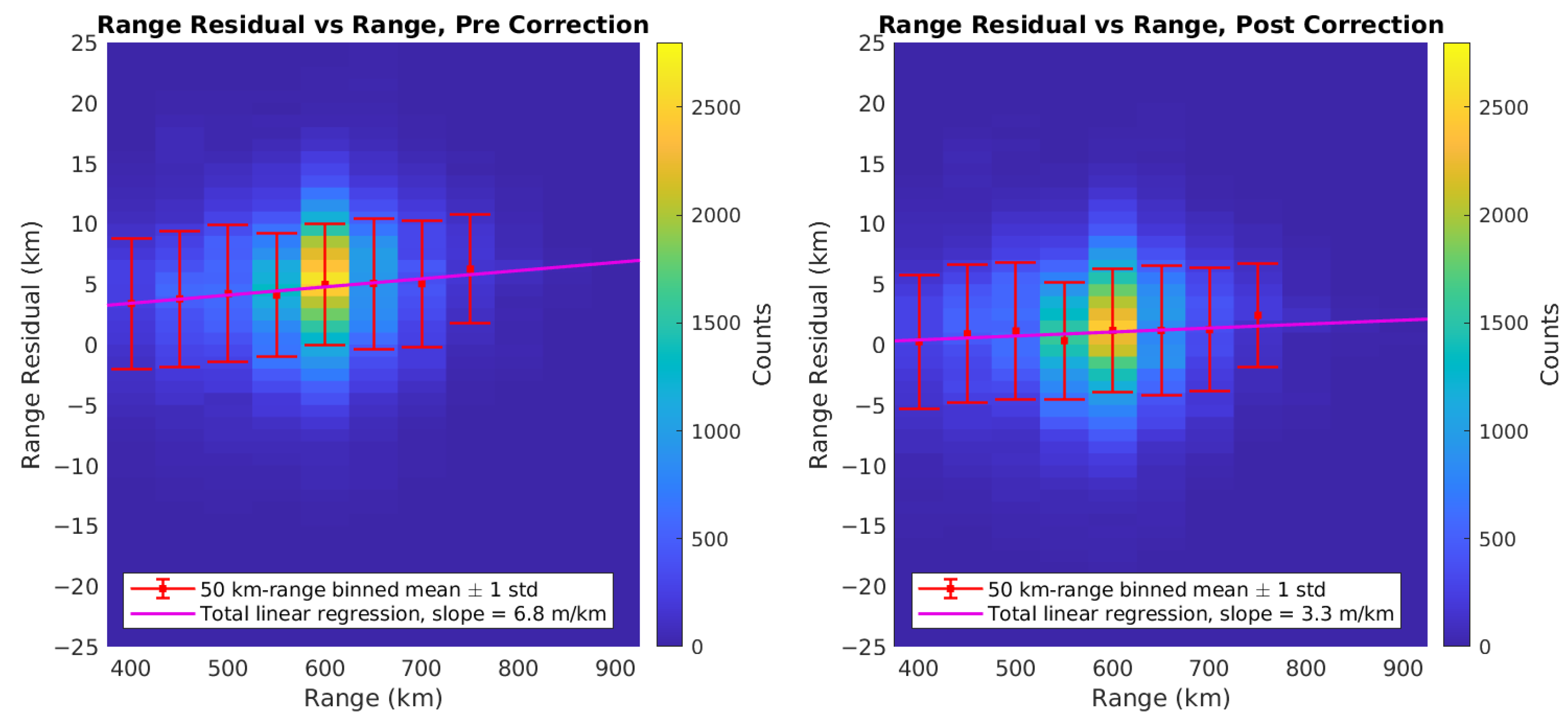
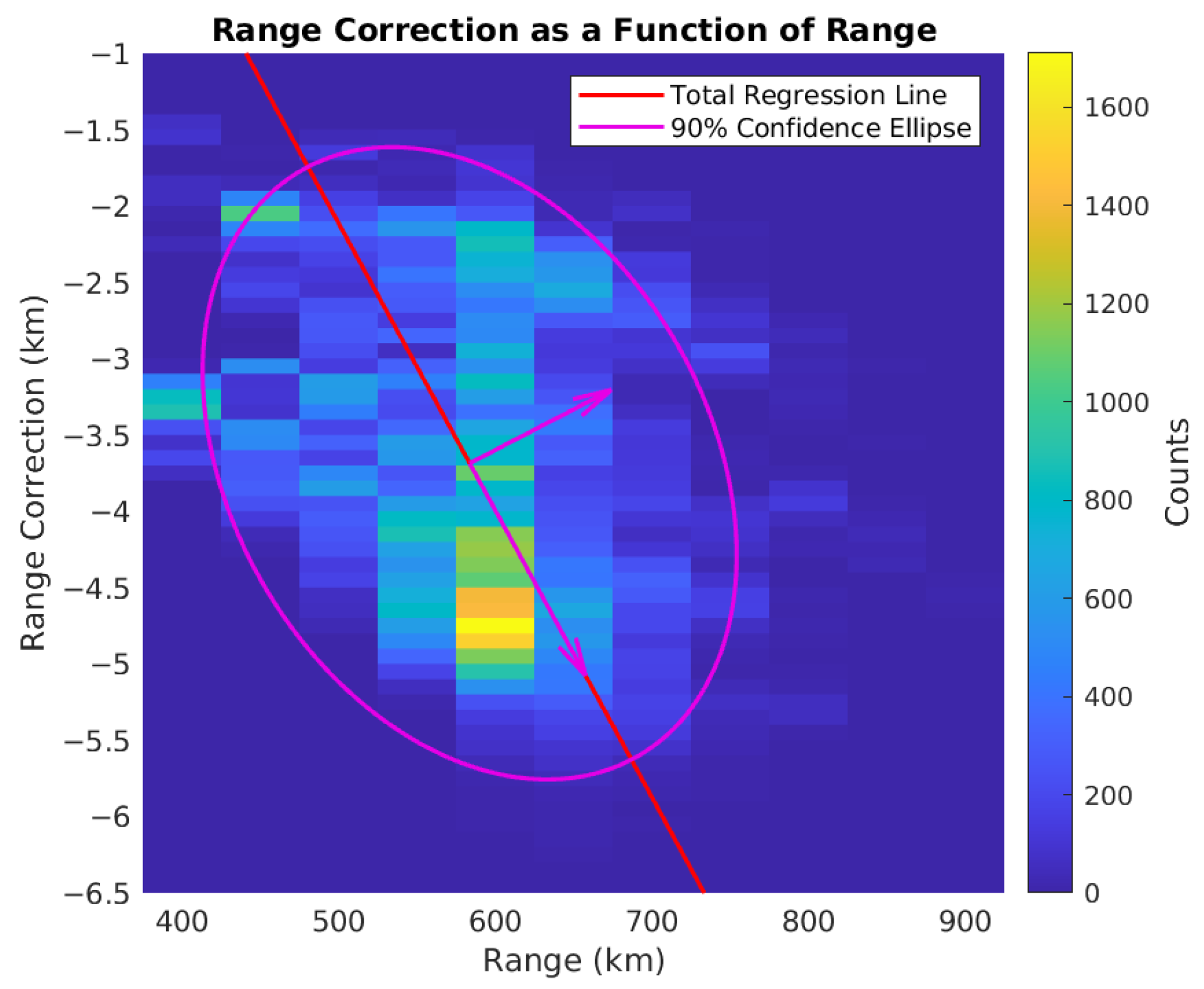
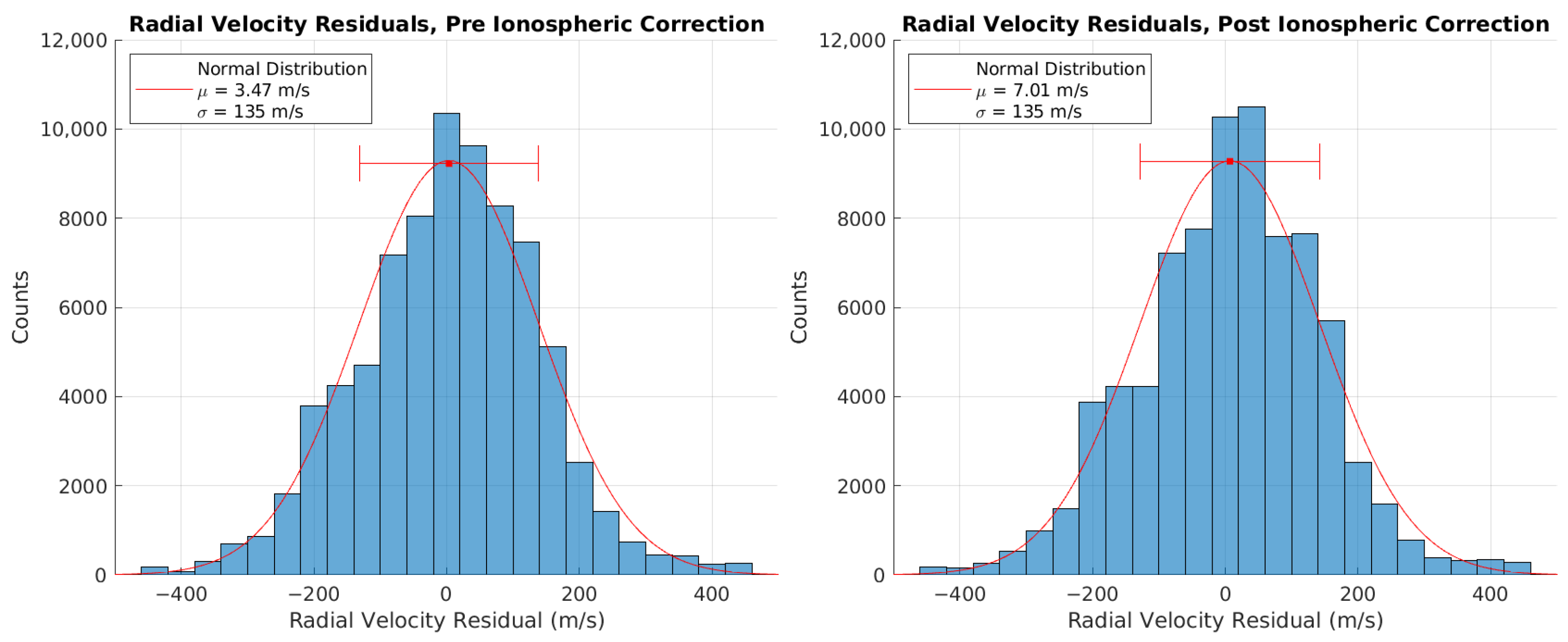
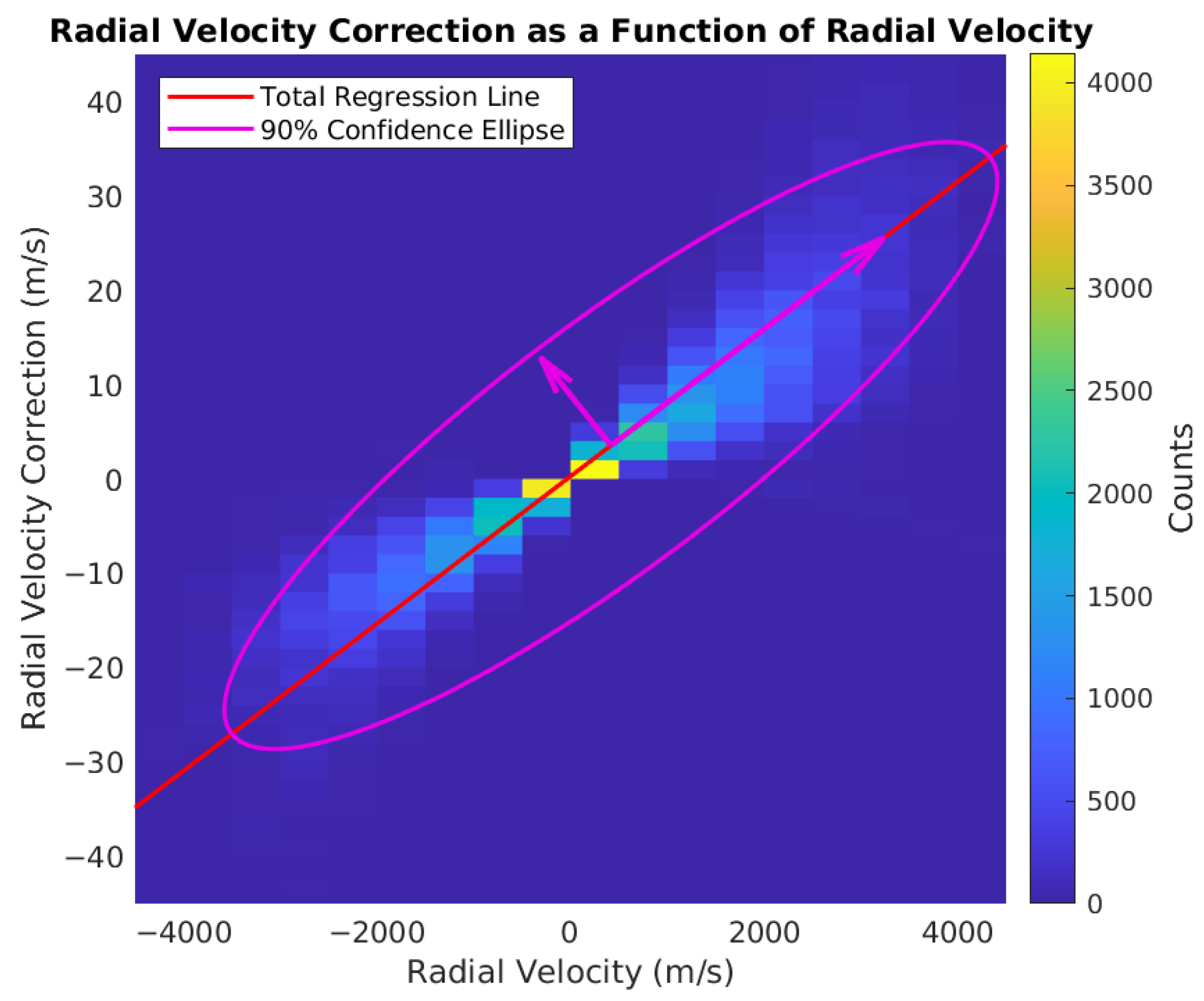




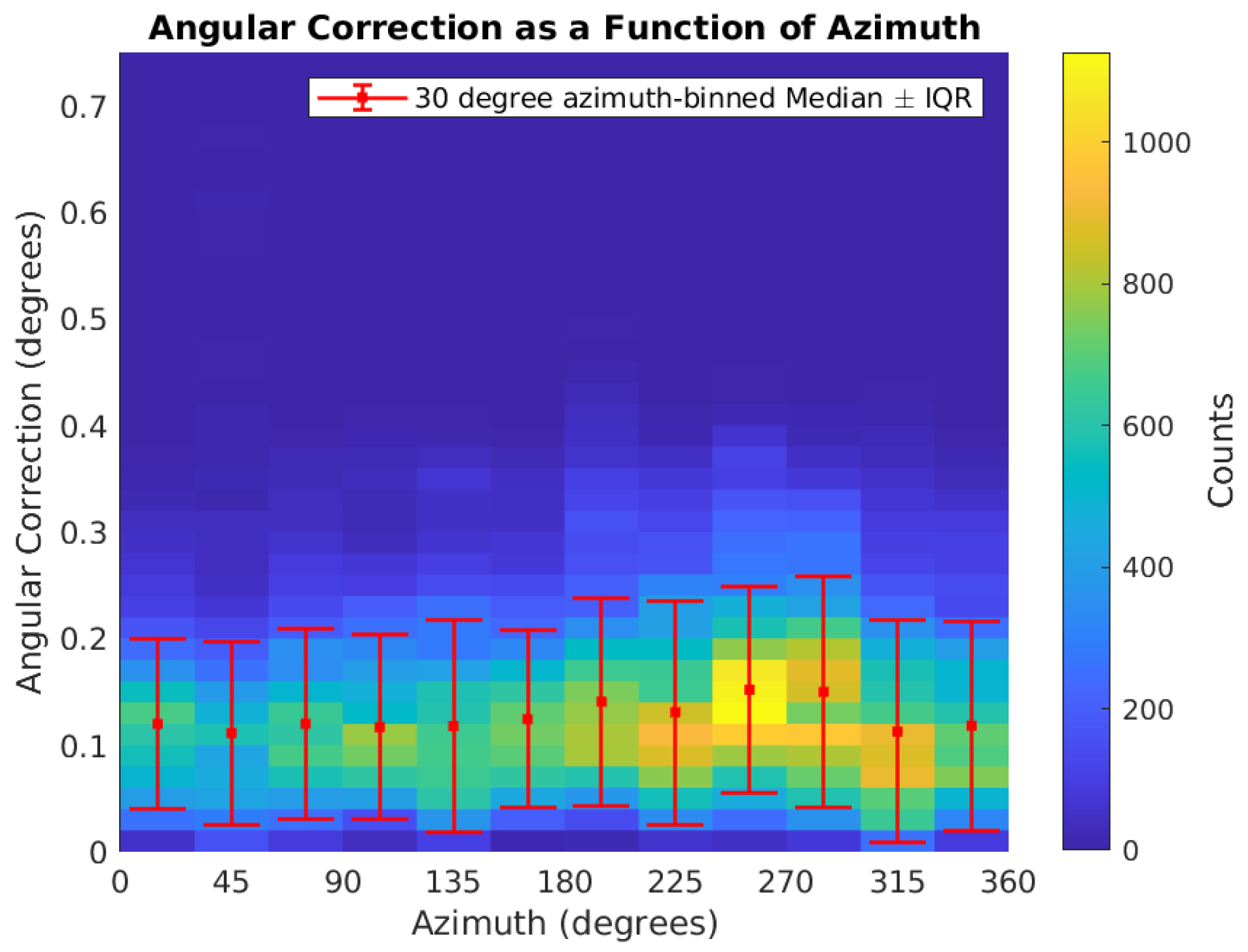
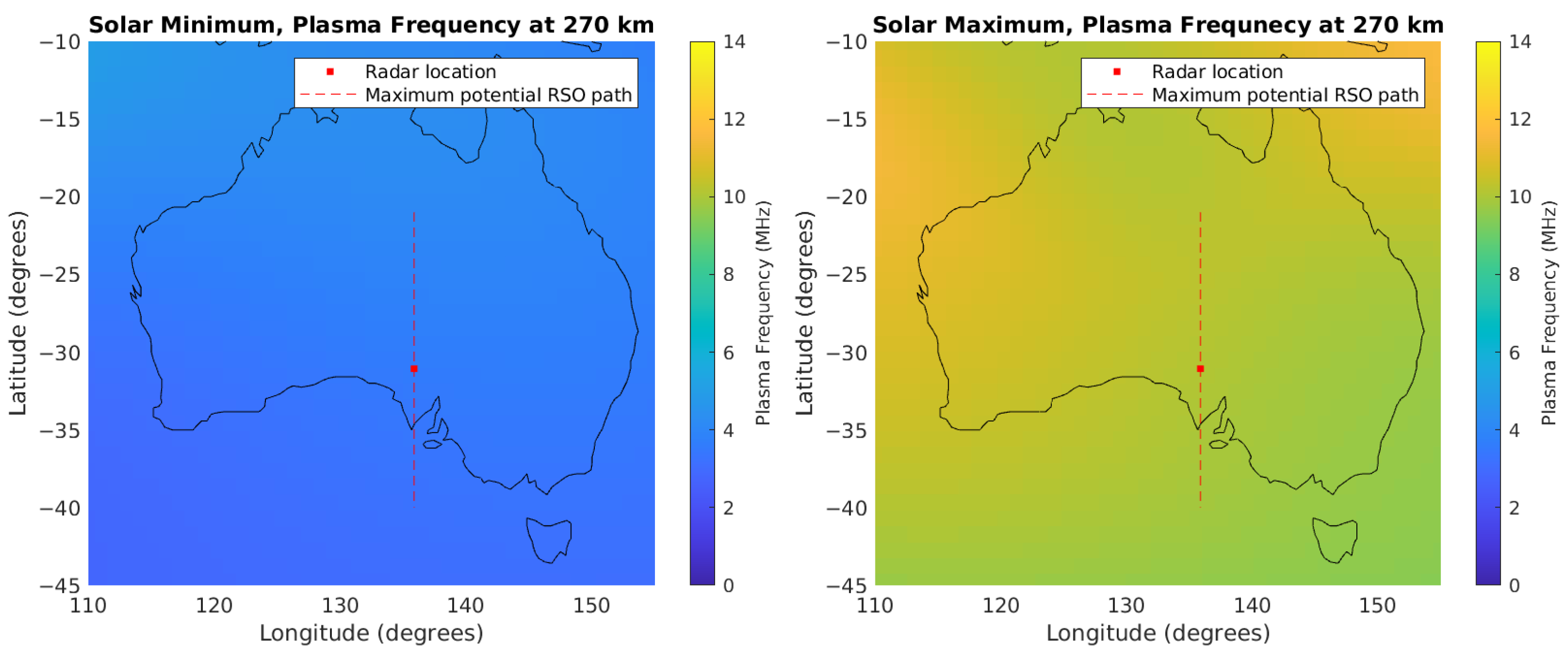
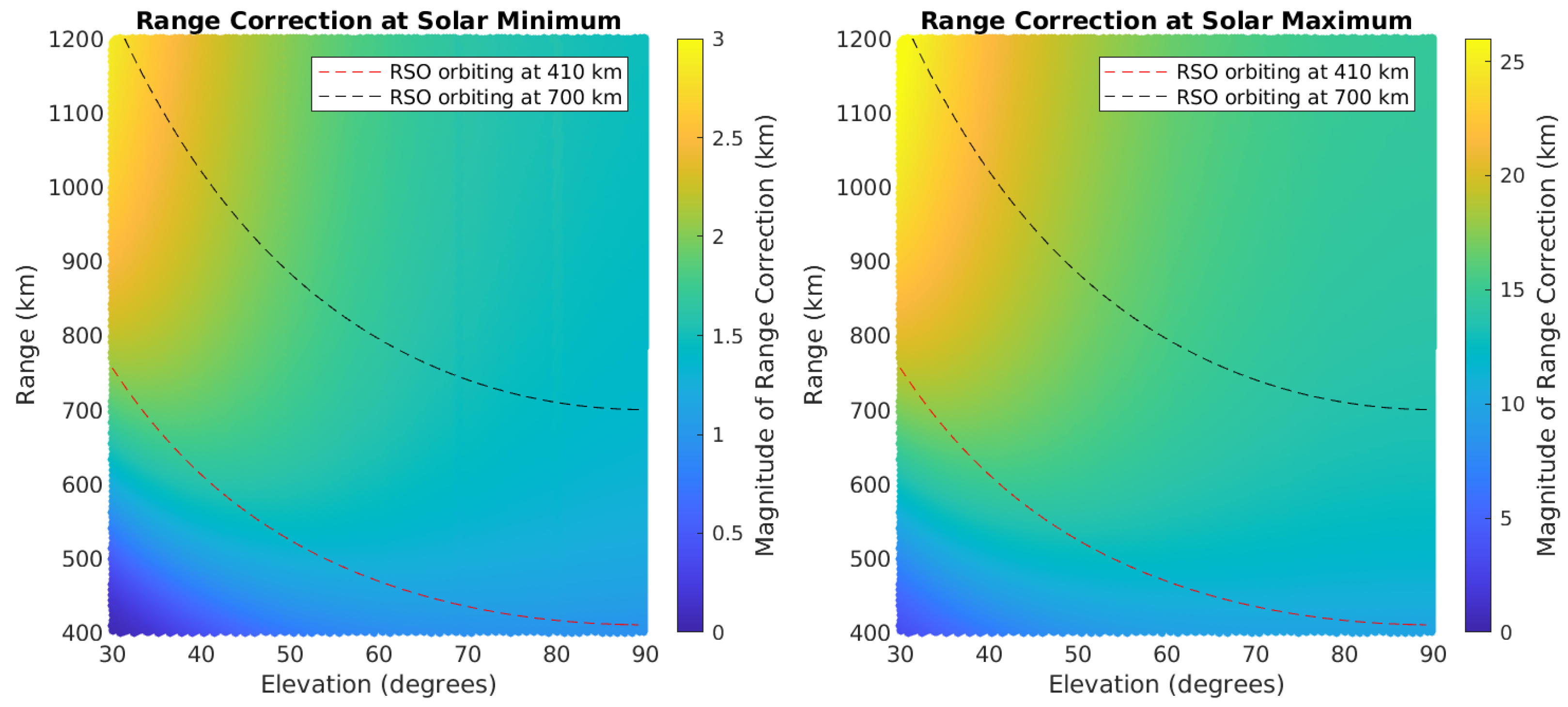
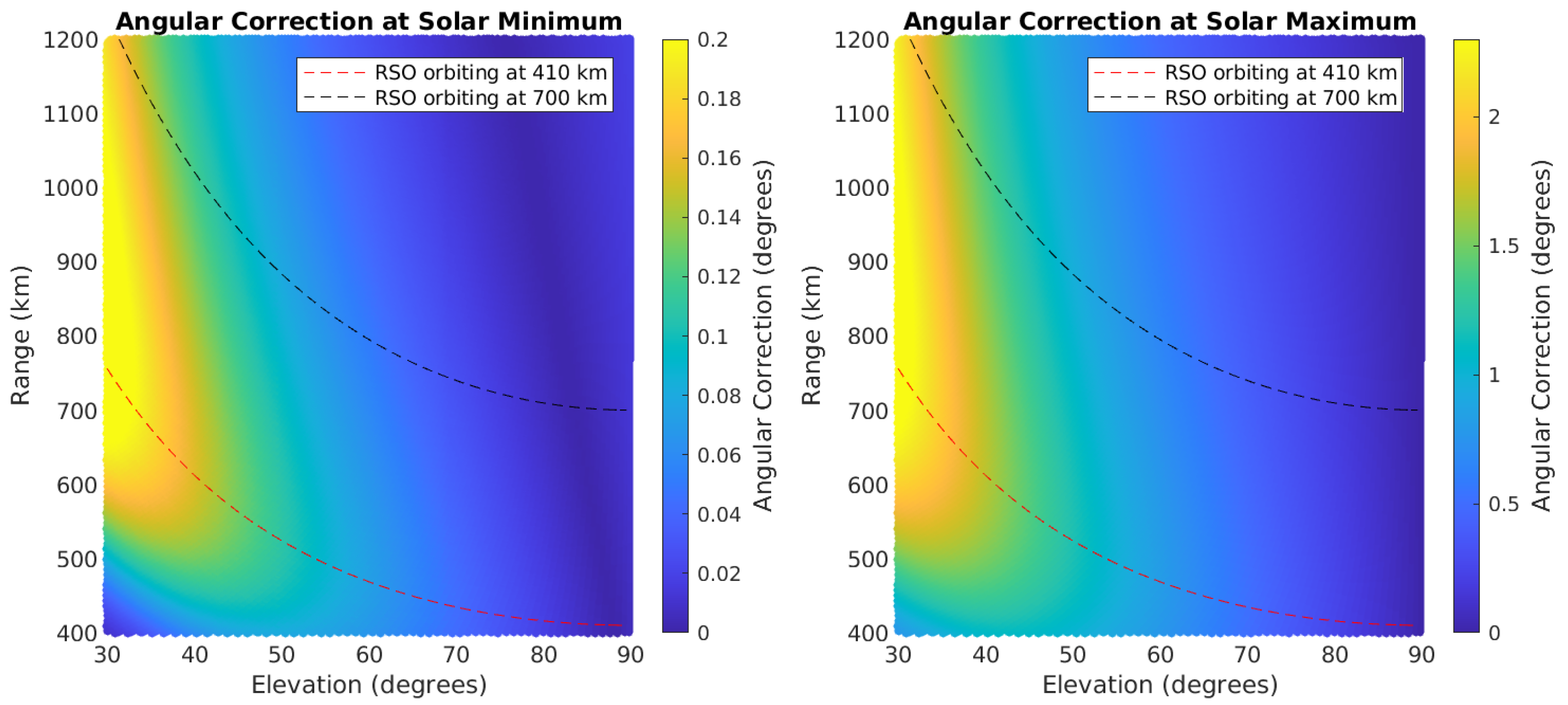
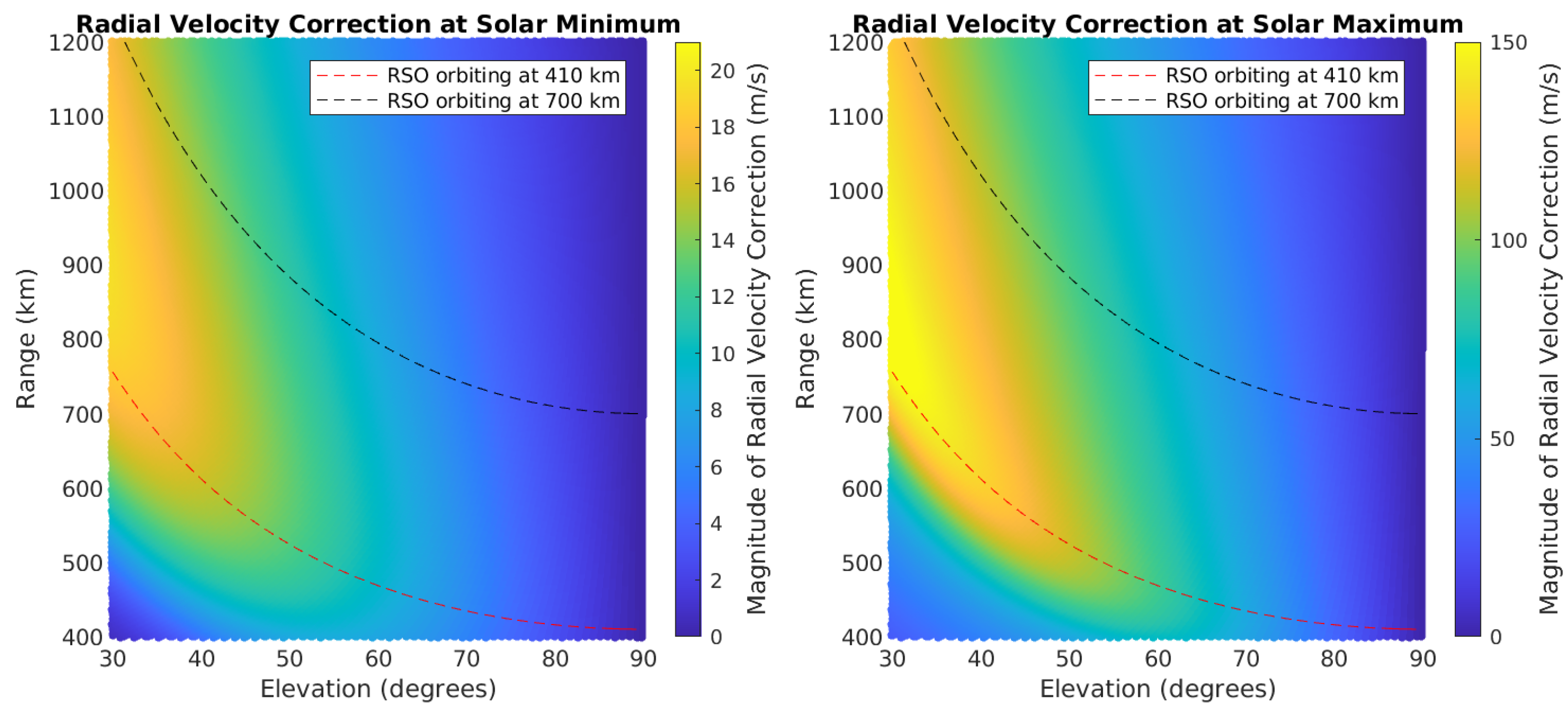
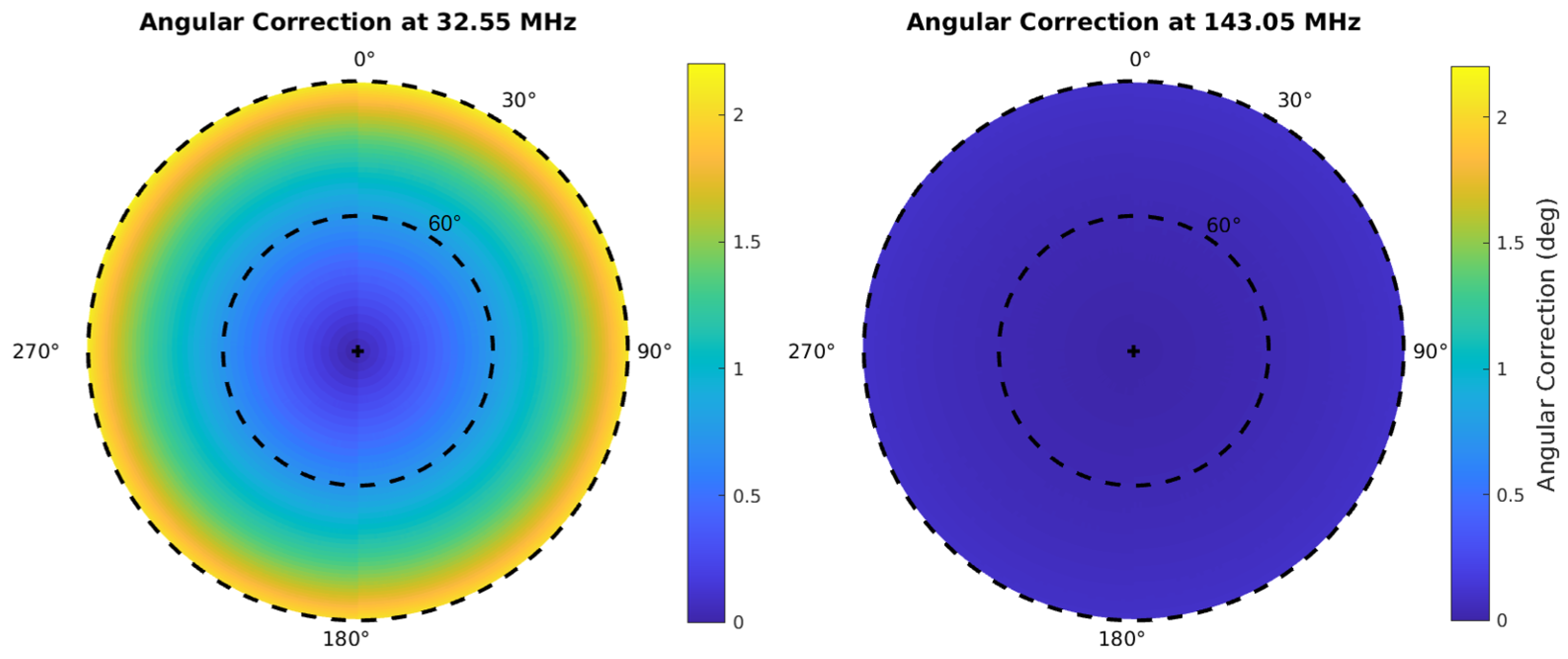
| Block | Start (UT) | End (UT) | Duration |
|---|---|---|---|
| Block 1 | 28-11-2020 21:37 | 29-11-2020 01:05 | 3 h 28 min |
| Block 2 | 29-11-2020 20:13 | 30-11-2020 05:07 | 8 h 54 min |
| Block 3 | 30-11-2020 23:17 | 01-12-2020 03:25 | 4 h 08 min |
| Block 4 | 02-12-2020 06:58 | 02-12-2020 13:03 | 6 h 05 min |
| Block 5 | 03-12-2020 05:55 | 03-12-2020 12:19 | 6 h 24 min |
| Block 6 | 04-12-2020 07:59 | 04-12-2020 12:29 | 4 h 30 min |
| RMS Correction, Raytracing Method | RMS Correction, Phase-Path Correction Method | RMS Difference Between Methods 1 | |
|---|---|---|---|
| Mid-Latitude, Solar Minimum | 19.8 m/s | 19.8 m/s | 0.07 m/s |
| Low-Latitude, Solar Minimum | 39.5 m/s | 39.7 m/s | 0.8 m/s |
| Mid-Latitude, Solar Maximum | 56.8 m/s | 56.5 m/s | 0.3 m/s |
| Low-Latitude, Solar Maximum | 72.0 m/s | 72.1 m/s | 0.3 m/s |
Disclaimer/Publisher’s Note: The statements, opinions and data contained in all publications are solely those of the individual author(s) and contributor(s) and not of MDPI and/or the editor(s). MDPI and/or the editor(s) disclaim responsibility for any injury to people or property resulting from any ideas, methods, instructions or products referred to in the content. |
© 2025 by the authors. Licensee MDPI, Basel, Switzerland. This article is an open access article distributed under the terms and conditions of the Creative Commons Attribution (CC BY) license (https://creativecommons.org/licenses/by/4.0/).
Share and Cite
Camilleri, T.; Cervera, M. Ionospheric Corrections for Space Domain Awareness Using HF Line-of-Sight Radar. Remote Sens. 2025, 17, 3827. https://doi.org/10.3390/rs17233827
Camilleri T, Cervera M. Ionospheric Corrections for Space Domain Awareness Using HF Line-of-Sight Radar. Remote Sensing. 2025; 17(23):3827. https://doi.org/10.3390/rs17233827
Chicago/Turabian StyleCamilleri, Tristan, and Manuel Cervera. 2025. "Ionospheric Corrections for Space Domain Awareness Using HF Line-of-Sight Radar" Remote Sensing 17, no. 23: 3827. https://doi.org/10.3390/rs17233827
APA StyleCamilleri, T., & Cervera, M. (2025). Ionospheric Corrections for Space Domain Awareness Using HF Line-of-Sight Radar. Remote Sensing, 17(23), 3827. https://doi.org/10.3390/rs17233827






